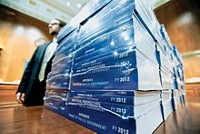Advertisement
Grab your lab coat. Let's get started
Welcome!
Welcome!
Create an account below to get 6 C&EN articles per month, receive newsletters and more - all free.
It seems this is your first time logging in online. Please enter the following information to continue.
As an ACS member you automatically get access to this site. All we need is few more details to create your reading experience.
Not you? Sign in with a different account.
Not you? Sign in with a different account.
ERROR 1
ERROR 1
ERROR 2
ERROR 2
ERROR 2
ERROR 2
ERROR 2
Password and Confirm password must match.
If you have an ACS member number, please enter it here so we can link this account to your membership. (optional)
ERROR 2
ACS values your privacy. By submitting your information, you are gaining access to C&EN and subscribing to our weekly newsletter. We use the information you provide to make your reading experience better, and we will never sell your data to third party members.
Policy
Affirming Science
President’s 2013 budget proposal provides increases to R&D and education
by Government & Policy Department
February 27, 2012
| A version of this story appeared in
Volume 90, Issue 9
Since taking office, President Barack Obama has touted the importance of basic research and science, technology, engineering, and mathematics (STEM) education for the economic prosperity of the U.S. Even in what has become a trying fiscal environment, the President does not appear to be wavering in his support.
Affirming Science
The 2013 budget request reaffirms his commitment. The $3.8 trillion proposal, which is within the spending caps imposed by the Budget Control Act of 2011, provides $140.8 billion for federal R&D, a 1.4% increase over the 2012 outlay. Of that amount, $64.0 billion, up 3.3% from 2012, would support basic and applied research—the R in R&D.
The Administration’s support for R&D focuses on several priorities. These include sustaining the growth of the National Science Foundation, the Department of Energy Office of Science, and the National Institute of Standards & Technology; promoting clean energy; supporting U.S. jobs through advanced manufacturing R&D; and preparing new innovators by ensuring effective STEM education.
“In the State of the Union, I outlined a blueprint for an economy that is built to last—an economy built on new manufacturing, and new sources of energy, and new skills and education for the American people,” the President said at an event rolling out the 2013 budget request. Calling the 2013 budget the details of that blueprint, Obama said that the request makes tough decisions about what programs to expand and which ones to scale back or terminate.

The following review of proposed R&D spending at the federal agencies comes with some caveats. The numbers are given mostly as budget obligations—that is, the amount that agencies can contract to spend during the fiscal year. What the agencies actually spend, or outlay, during the year may be more or less.
Also, the federal budget is a complex document with various ways of adding up programs and totals. As a result, sometimes the agency or department figures and the totals from the White House Office of Management & Budget are not the same and may be published in different places with different amounts. The variations are usually small and reflect alternative methods of allocating funds.
The Budget Process: Proposal now goes to congress
The fiscal 2013 budget now goes to the House of Representatives and Senate Appropriations Committees, where it is divided into 13 appropriations bills. Hearings will be held on each bill by various committees, and legislation will emerge that sets the levels of spending for all federal departments and agencies. The numbers approved by Congress may be very different from those originally proposed by the Administration, but historically, R&D has not been radically changed. The whole process is supposed to be completed and the bills signed by the President by Sept. 30, the last day of fiscal 2012.






Join the conversation
Contact the reporter
Submit a Letter to the Editor for publication
Engage with us on Twitter